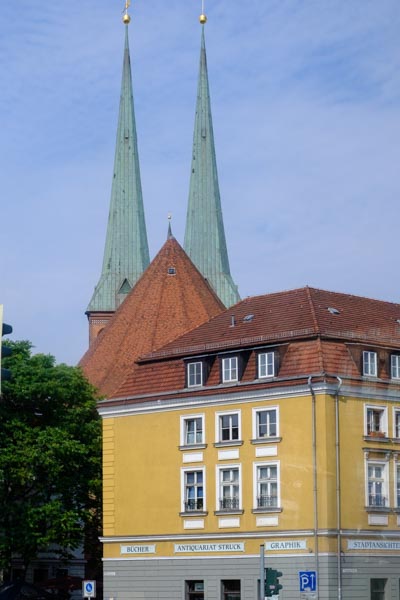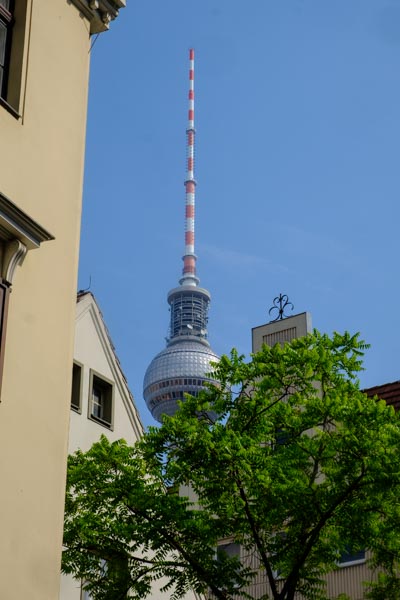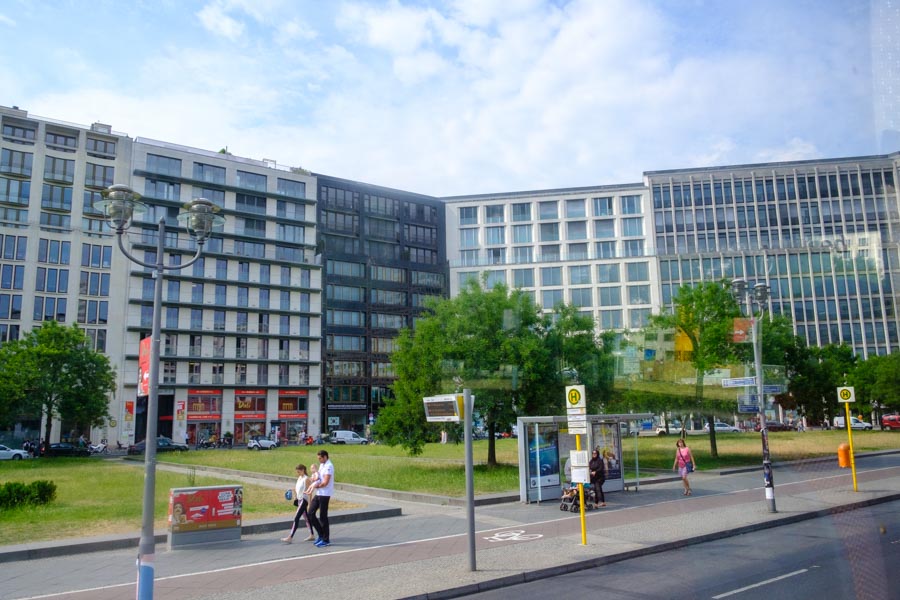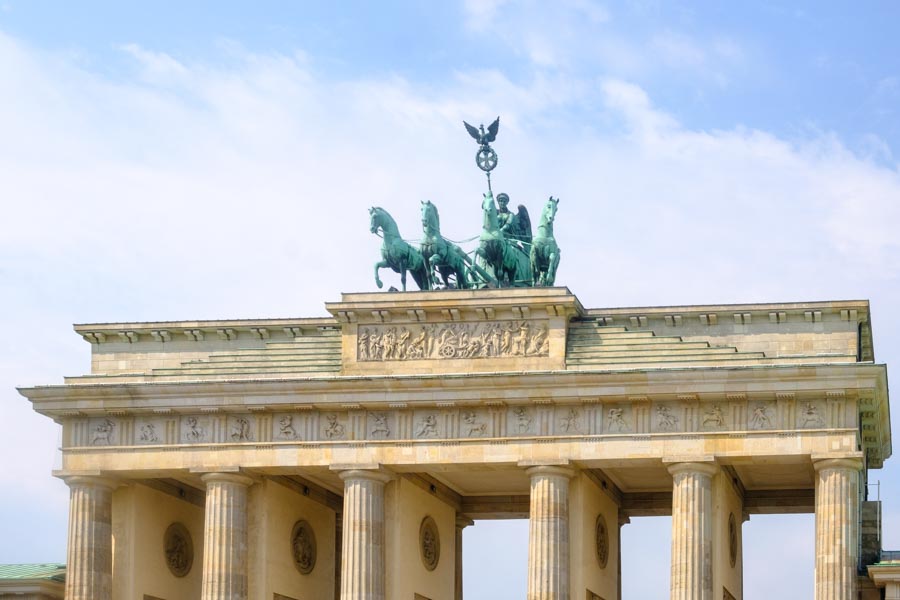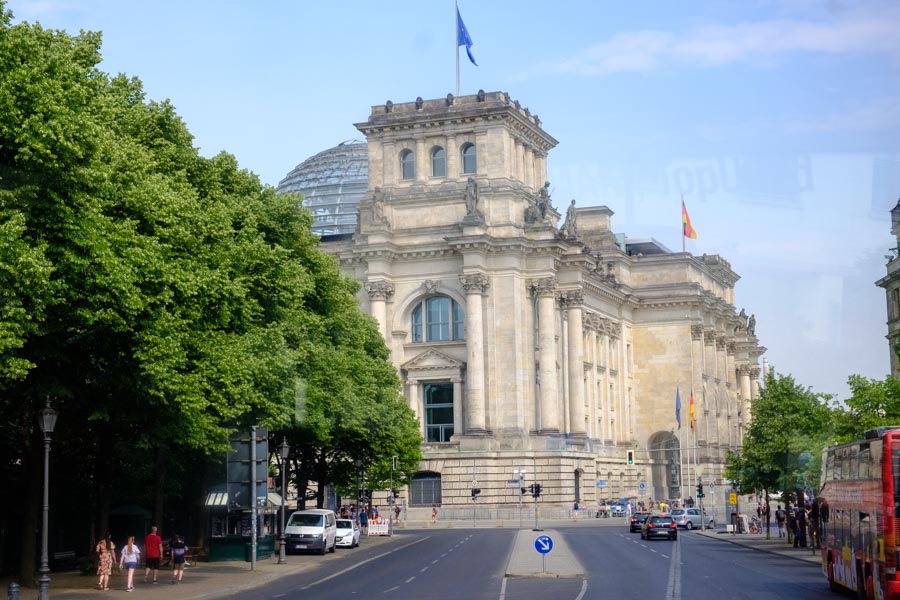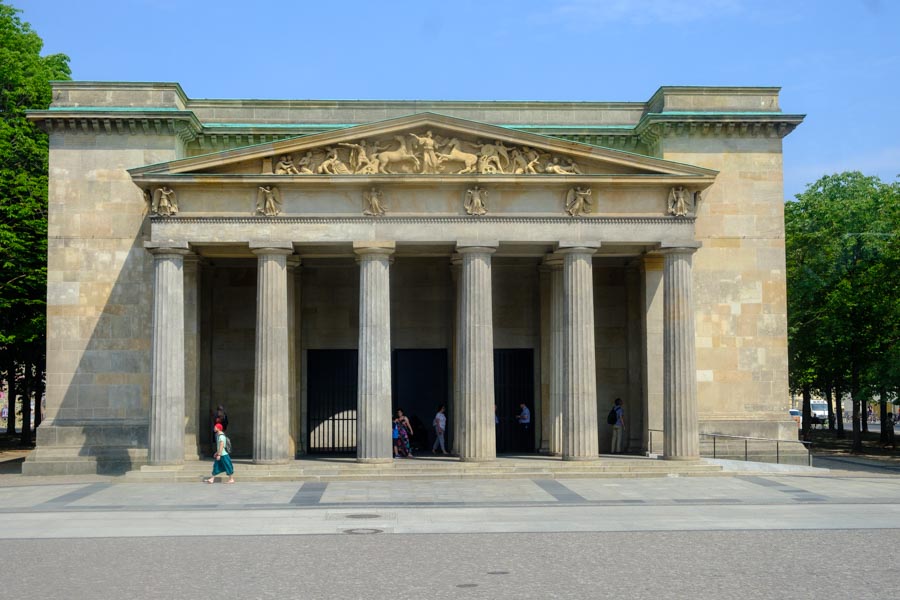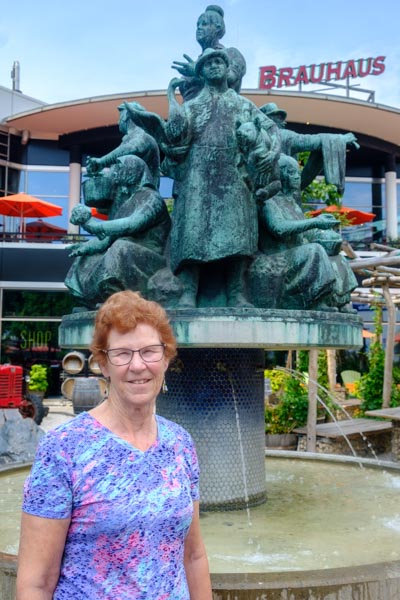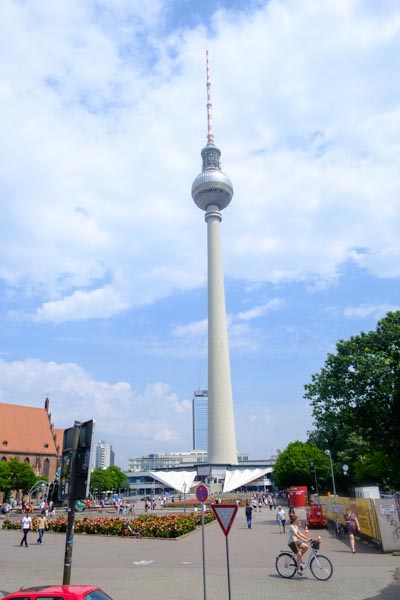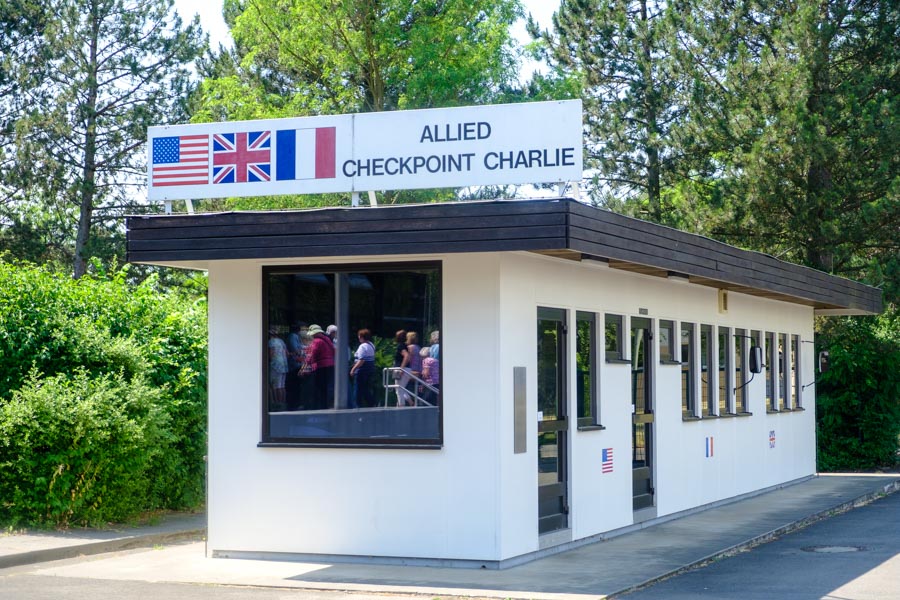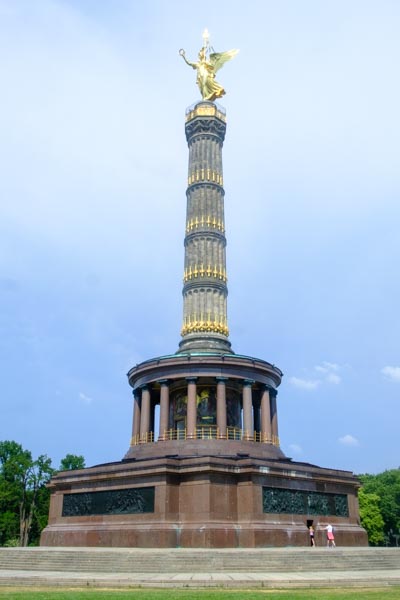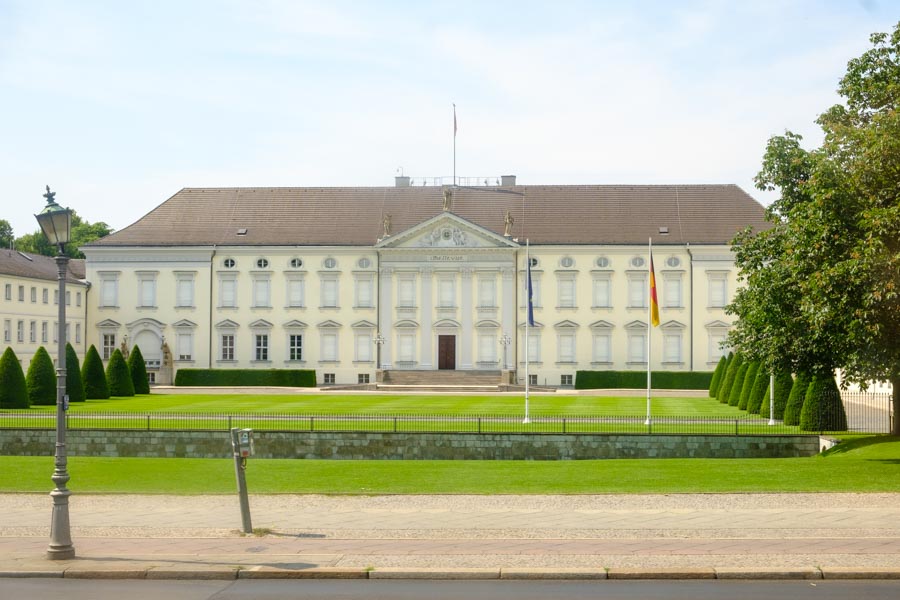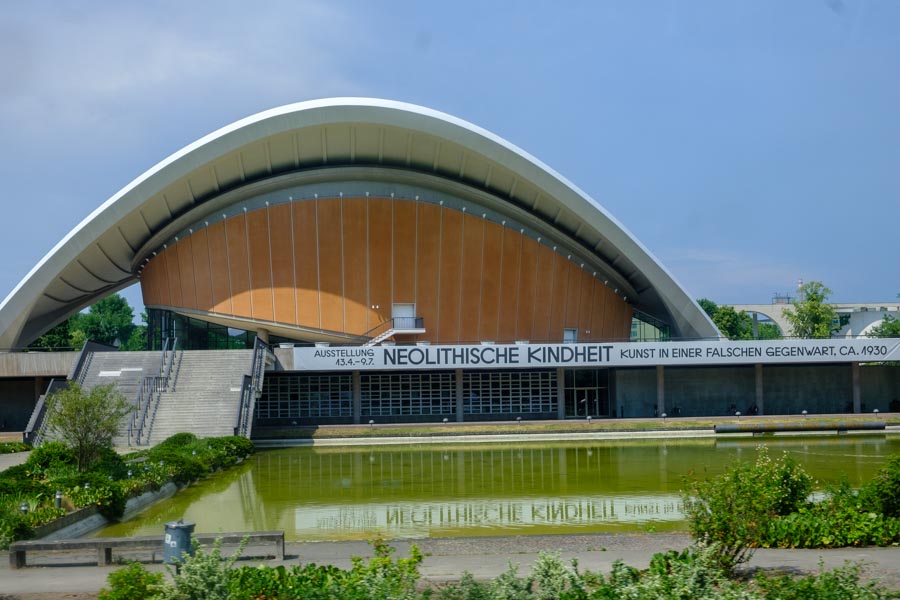Six hours later, we’ve done Berlin. The day started with a 5:00 AM breakfast, 6:30 train departure for a 2.5 hour ride to Berlin’s East station. Viking used to use buses, which took four hours each way. Roughly 650 passengers – 2/3 of the ship’s passengers – 20 busses full – made the trip.
This was a classical “panoramic” tour – ride by bus through city traffic, hop off the bus for a 15 minute photo op and away we go to the next stop. And this is Prussia, not beer-swilling, laid-back Bavaria: “Vee vill be back on the bus in Exactly 15 minutes.” Shooting pictures through the window from a moving bus isn’t ideal either. Yes I know, I can hear many of you groaning, “Poor devils! Sounds horrible. That’s not for me.”
Yes . . . but. Berlin is a big sprawling city with long distances between important sites. Making things even more difficult, many of the important points of this, a history tour focusing on the Twentieth century, have disappeared. They have been replaced by the massive reconstruction projects that have rebuilt much of the city, especially East Berlin. Interestingly, the East has received more rebuilding than the West. Maybe that’s because there was more to reconstruct in the East. The East had not only the bomb damage incurred during WWII but it suffered even more as the Soviets tore down politically-offensive buildings and as conditions deteriorated under the communistic Democratic Republic of Germany. Whatever the reason, our guide, a West Berliner, says the East looks much better than the West today.
For one who remembers when the Berlin Wall went up and when it came down it’s sobering to realize that the wall has as of this year been down longer than it was up. It was erected in 1961 not by the Soviets but by the East Berlin Army who wanted to stop the brain drain from East to West. Later Stalin, miffed because he didn’t receive reparations after the war, cut off road access to West Berlin, leading to the Berlin airlift. We saw a few remaining sections of the wall maintained as remembrances, but there is far more Wall in foreign museums than exists in Berlin. The path followed by the wall is documented by two narrow bricks set in the road’s pavement.
Our guide used to visit relatives in the East once or twice a year. It was a one-way door of course; West could visit Eest but not the opposite. Westerners could walk up and touch the wall. The area in front of the eastern side of the wall was a kill zone patrolled by armed guards on foot and in observation towers.
Part of our tour was a real German lunch – sausages, meat balls and slabs of pork served with potatoes, sauerkraut and beer. Oomph pa, am I stuffed, especially since I had to buy us ice cream cones this afternoon so I could get change to tip the guide and driver, never mind the German bread roll stuffed with mustard sauce, peanuts and wine they served on the train coming home. They may need to deploy the cargo sling to hoist me back on board.
Even though everything is thoroughly up to date in East Berlin, the pain of reunification remains. Our train to and from Berlin passed through large tracts of farm land – grain fields , I’d say – but no cute little farm houses like you see in all the magazines. Why? Because we traveled through the former GDR – East Germany – where the farms are today mostly large corporate farms rather than family farms as is the case in the old West Germany. Under Communism, land was handed over to the GDR and farms were run as collectives. During reunification the government went to great lengths to return land to the owners as of 1949. But many East Germans simply walked away or didn’t have the skills and experience to operate the farms.
At the time of reunification the government struggled to find a way to bring East living conditions to an acceptable level. Remember, Germany is a democratic welfare state. Even today the East has much lower income levels than the West, especially outside Berlin. Unemployment levels in the East run 15% or more. The rate is 1% in Berlin. West Berliners pay a reunification tax to fund economic redistribution – not a popular tax.
What does Berlin feel like? If Copenhagen felt like a big city, Berlin feels like a really big city. It sprawls. I forget the exact size but the guide compared Berlin in geographic area with under 4 million people to Mexico City with population 75 million.
Berlin is styled in some areas to resemble Paris, which maybe it does. But Berlin’s boulevards feel more constrained, maybe because car parking slots are intermixed with shade trees, somewhat altering the feel. It probably feels good to Berliners looking for places to park their Beemers. We’re told that Berlin is growing rapidly, being especially attractive to the young. It’s a liberal, open culture with lots of cultural and entertainment options. A large entrepreneurial start-up business climate has developed. Population is growing by 25,000 per year.
And so it wasn’t all that bad. The guide was good. He showed us all the important tourist destinations and gave us an understandable recounting of recent history. He related personal stories that helped bring it to life. Berlin is certainly the most culturally complex and historically interesting places we’ve visited on this trip and on many other trips. So yes, it wasn’t perfect, but on a hot (89 degree) day we covered a lot more ground and learned a lot more than we would have wandering around on our own, map in hand.
Tonight we’re off for Gdańsk, Poland. The good news: I wrote this on the train so maybe we can get to bed early tonight!
By the way, Judy has put together a short video of our trip in Norway. Here’s a link:
http://judyrick.zenfolio.com/viking_scandinavia_2018


